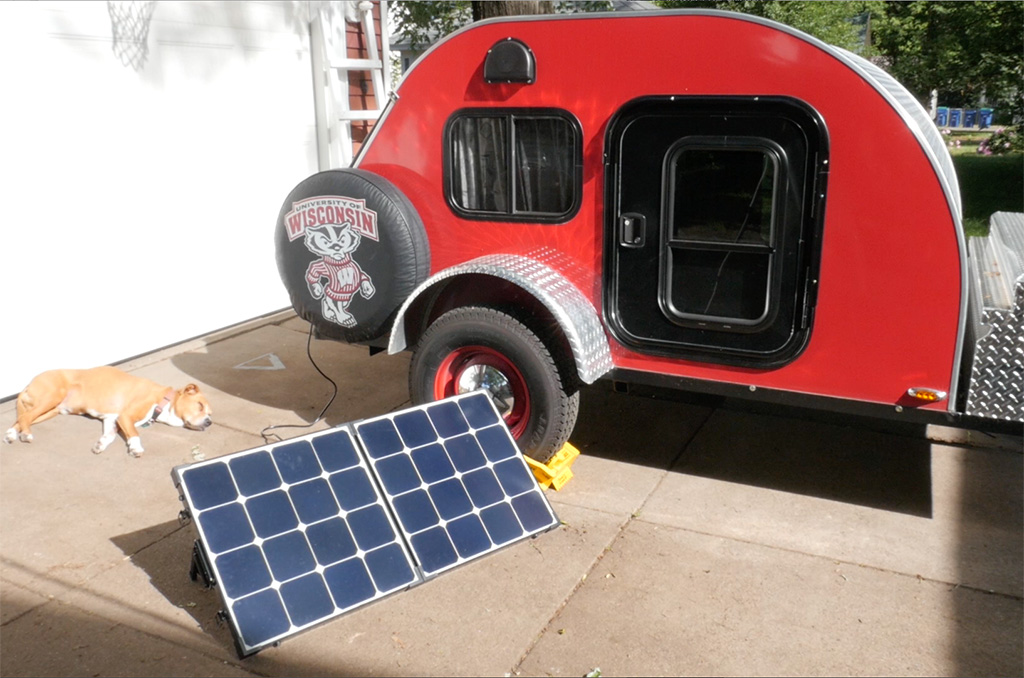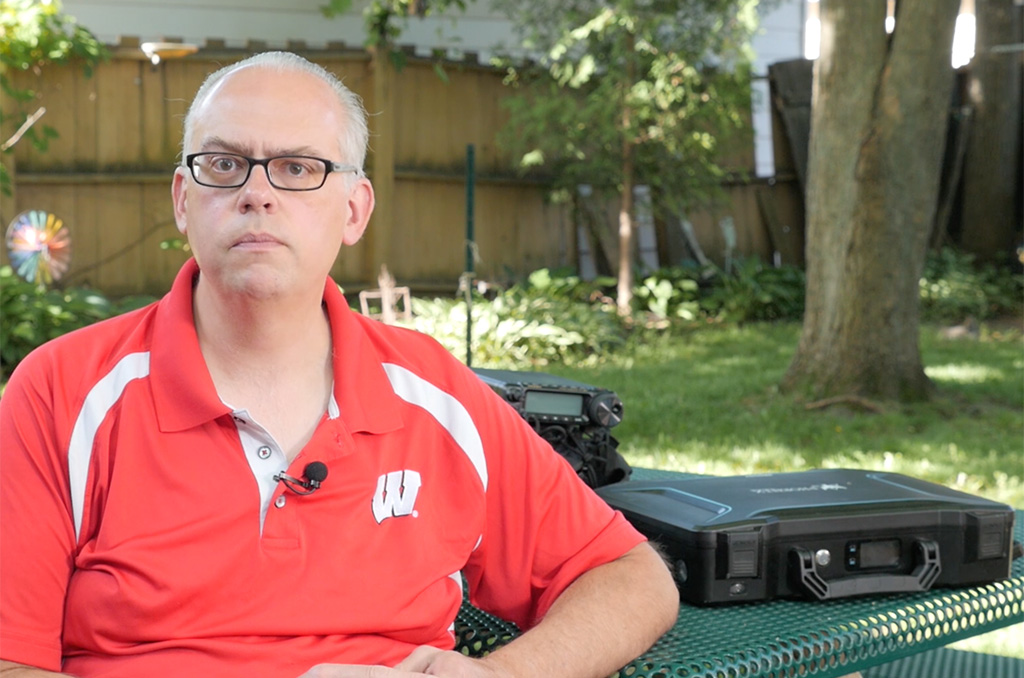My recent video on portable HF kit generated a lot of questions on what I use for a power supply. So as I’m prepping for a camping trip this weekend, I thought I’d take a moment and share what I use for portable power when off in the field.
I’ve been a long time tent camper and have done a bit of backpacking when my kids were in Scouts, so when we moved up to the teardrop trailer, even though we do have more space to carry gear, I still try to economize my ham radio kit as i don’t really want to bring more into the field than I really have to. I also try to think of my gear in modular units so I can pick an choose the pieces that best fit the situation, whether its a weekend with the trailer or an afternoon activation in a park. So in this video I’ll talk a little about power needs and what I’m doing to meet those needs.
Batteries are either heavy and cheap, or lightweight and expensive. There is no way around that. For cheap, at one time I was using a 12 volt garden tractor battery. It was under $30 and had plenty of power, but it was a wet cell battery and would cause a mess if it spilled. So I upgraded to a 12 volt AGM or Absorbent Glass Matt battery. it’s more expensive, but is completely sealed so it won’t spill if tipped over. Eventually I may upgrade once again to a lightweight Lithium Iron Phosphate battery, as those are extremely lightweight and have extremely good power capacity, but they are still quite expensive. If I was backpacking, I’d certainly go that route, but since most of my ventures are vehicle based, the AGM batteries are fine.
 In the trailer I have a 12 volt U1 sized AGM battery. It has 33 amp hours of power capacity and I can charge it either with an onboard battery charger, I’m using the Noco Genius G3500 3.5 amp charger, or with a 100 watt solar panel, and I have the Renogy Eclipse solar suitcase. We almost exclusively dry camp with the trailer, so the Eclipse has been a very nice addition to be able to extend the length of our outings without needing electricity.
In the trailer I have a 12 volt U1 sized AGM battery. It has 33 amp hours of power capacity and I can charge it either with an onboard battery charger, I’m using the Noco Genius G3500 3.5 amp charger, or with a 100 watt solar panel, and I have the Renogy Eclipse solar suitcase. We almost exclusively dry camp with the trailer, so the Eclipse has been a very nice addition to be able to extend the length of our outings without needing electricity.
With a setup like this I can run a power cable off the battery which is located in the galley and power my equipment. Since the battery is 33 amp hours, I can run up to 100 watts of transmit power with the Yaesu FT-891.
But what if I want something a little more portable. For that I use a portable power pack. I have the Renogy Phoenix solar generator. This suitcase shaped kit has an integrate 20 watt solar panel for charging and a 16 amp hour lithium ion battery pack. it also has DC 12 volt output, 5 volt USB output, and a 150 watt inverter. With this battery I can run my HF rig at up to 50 watts transmit power. The Renogy is a little expensive, and this a gift from my sister in-law, but there are other more inexpensive options available. Look for a power pack or battery booster pack that gives you at least 15 amp hours of power.
 Now we talked a little bit about battery power in terms of amp-hours, but what does that mean? Basically the capacity of the battery will determine at what power level you can transmit at and for how long the battery will last. Batteries store energy, but they can’t deliver more than their peak capacity. If I try to draw more current than what the battery is rated for, the radio will shut down. So my transmit power is going to be governed by the type of battery I select.
Now we talked a little bit about battery power in terms of amp-hours, but what does that mean? Basically the capacity of the battery will determine at what power level you can transmit at and for how long the battery will last. Batteries store energy, but they can’t deliver more than their peak capacity. If I try to draw more current than what the battery is rated for, the radio will shut down. So my transmit power is going to be governed by the type of battery I select.
For example, if I had a 6 amp battery, like this sealed lead acid battery, I could use it for QRP, 5 or 10 watts of power. A QRP rig at 10 watts will draw roughly 2.5 amps of current. If I set my transmitter to 50 watts, then I will draw about 12 amps of current. going barefoot, or 100 watts, will require about 22 amps of current. Since a bigger battery means more weight, a backpacker will want to select a highly efficient battery or keep their transmit power down to a low level so they can carry a smaller battery.
Now amp hour capacity also determines how long your battery will run on a charge. Theoretically, if I have a 33 amp hour battery I could power a 33 amp device for one hour until it depletes. Of course that’s not entirely true due to the discharge characteristics of the battery and the physics of power. But you get the point. So if I turn my transmit power down my battery will last longer. Also if I modulate my duty cycle, I can stretch battery life even more. So if my radio draws 1 amp on receive and 12 amps on transmit, and during a one hour period I transmit for 15 minutes total and receive for 45, my total consumption for that hour will be 3.75 amps. My 33 amp hour battery could last almost 9 hours before depletion.
I hope this helps with you an understanding of portable power needs for field operation. If you have any questions, please leave them below. I usually go through and answer them best I can. I may even select a couple for my next Your Questions Answered video.
Recent Comments